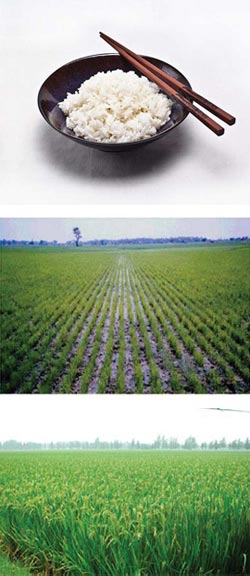Rice quality
 What is rice quality?
What is rice quality?
Rice quality refers to a combination of physical and chemical characteristics that are required for a specific use by a specific user. The quality of the grain is best when it reaches physiological maturity. Management from that point onward will determine the rate of decline in quality though it would not be able to stop some decline in quality from occurring.
What determines grain quality?
Grain quality is determined by a combination of varietal properties and environmental conditions which occur during crop production, harvesting, processing and handling.
Varietal properties
These include:
- chemical characteristics (gelatinization temperature, apparent amylase content, gel consistency, alkali spreading value, aroma)
- shape
- size
- color of grain
- chalkiness
- bulk density
- thermal conductivity
- equilibrium moisture content
Environmental Properties
These are either in addition to normal varietal qualities or are the consequence of certain varietal qualities being lost or modified (e.g. during milling). The important environmental properties are:
- moisture content
- grain purity
- physical and pest damage, cracked grains
- presence of immature grains and
- milling-related characteristics (head rice recovery, grain dimensions, whiteness, milling degree and chalkiness)
Milling-related characteristics are relevant measures of value because these are the major concern of consumers.
For more information:
Visit the Rice Knowledge Bank website (http://www.knowledgebank.irri.org), email postharvest@irri.org; or call +63 2 580 5600.







